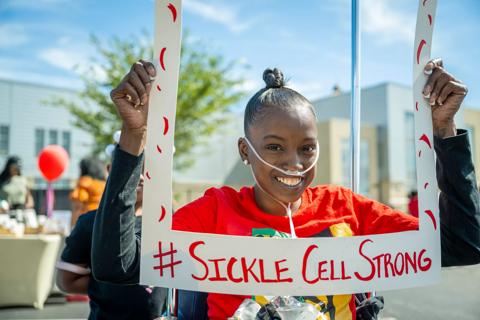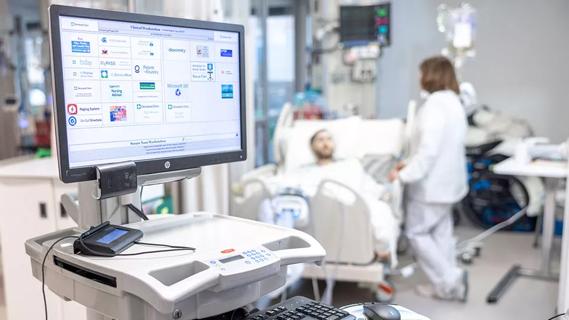System-wide program gives nurses the chance to initiate innovation

The healthcare landscape is continually evolving and nurses must not only change with it, but be in the vanguard. “For us to remain competitive, practice at the top of our capabilities and ensure high-quality care and great clinical outcomes, we need to constantly revisit what we do and challenge ourselves to find better, faster and less expensive ways of achieving excellent nursing care,” says Nelita Zytkowski, DNP, MS, NEA-BC, RN-BC, FHIMSS, Associate Chief Nursing Officer for Informatics at Cleveland Clinic.
Cleveland Clinic is a non-profit academic medical center. Advertising on our site helps support our mission. We do not endorse non-Cleveland Clinic products or services. Policy
Last fall, Cleveland Clinic’s Zielony Nursing Institute launched its “Ideas 2 Innovation (I2I)” program to identify, prioritize and test innovative approaches to nursing and patient care. Three units were selected within the health system to trial novel ideas, technologies and processes. “The I2I program creates a living laboratory for nurses. Nurses are free to complete product evaluations and research trials of nursing practices or devices, and quality or continuous improvement initiatives, then disseminate results to the rest of the Nursing Institute,” explains Dr. Zytkowski, who serves as co-chair of the I2I council that is overseeing this program.
The I2I units were established on medical/surgical floors at Cleveland Clinic’s main campus and two community hospitals —Hillcrest and Lakewood. The units selected met the following criteria:
The scope of this initiative goes well beyond testing new products or devices. “When some people think about the word ‘innovations,’ gadgets and systems immediately come to mind,” says Dr. Zytkowski. “In our I2I program, the whole nursing experience is taken into account.” The council, comprising a dozen representatives throughout the Zielony Nursing Institute, will select innovations for trial that fall into many categories, including people, processes, technology and outcomes. The council hopes to implement at least one project each quarter in 2014.
Sue Collier, DNP, BA, RN, NEA-BC, believes nurses are the ideal caregivers to trial innovations. “By virtue of their 24/7 presence in hospitals, nurses are the coordinators of the care team,” says Dr. Collier, CNO and Vice President of Hillcrest Hospital and a member of the I2I program council. “As nurses increasingly wear the mantle of multidisciplinary team leader, their advocacy skills lead to trying new processes and new equipment to provide safer, more efficient care for patients.”
The first approved project began on all three units in January. Nurses are evaluating an automated lift seat for a bedside commode. “It’s like an easy chair that safely gets the patient from a sitting to standing position using a hydraulic lift,” says Dr. Zytkowski. The goal is to decrease patient falls and caregiver-related injuries during a time when both patients and caregivers are at a high risk for harm. This inaugural I2I unit project may lead to development of a screening tool to help nurses identify patients who can benefit most from an automated lift seat design for toileting.
Prior to evaluating the lift seat, each unit collected baseline data on patient fall event rates related to being on a commode and nurse injuries sustained when helping patients. Nurses will collect similar data during a product evaluation approach, then compare outcomes.
Although the project is in its infancy, the lift seat reactions at Hillcrest Hospital have been generally positive, from both nurses and patients. In addition, unit staff are excited to participate in more projects. “Participating in this initiative means we will be given an opportunity to truly affect the future of nursing — and not only the products we use,” says Matthew Drew, MS, BSN, RN, Nurse Manager of the I2I unit at Hillcrest Hospital. “It will allow us to look at making processes safer for patients and allow for better workflows for the staff.”
Lakewood Hospital CNO Mary Sauer, MBA, BSN, RN, NEABC, is honored that one of her units was selected for this initiative. “It’s very important that we look at our practice and ways we can do things better for patients,” says Sauer, who is a member of the I2I council. “For us to continue to thrive, we need to continually ask how we can do things differently.”
Following the launch of its first project, the I2I council began considering several other project proposals, including a pilot of a wireless monitoring system for hand hygiene.
The Zielony Nursing Institute developed a project workflow framework to ensure all ideas are carefully considered and that the best ones are assessed or implemented. It begins when a caregiver submits an idea for a project to the I2I council. The contact person can be a nurse, administrator, outside vendor or anyone with an innovative idea.
Next, the council reviews project requests. Feasibility, target audience, risks, benefits, cost to implement and use, and other project features are assessed. If the project is selected, a member of the council is assigned to sponsor it. The sponsor partners with the project contact and the I2I governance team to coordinate efforts.
After approved projects are executed, the project contact reports back to the council with outcomes and recommendations about whether to move forward with the project enterprisewide. Alternately, council members may recommend further assessment in other work settings or may wish to adapt the process or system and reassess it in the same setting.
The I2I unit initiative has great potential to enhance quality of care through alignment of people, processes, outcomes and technology. Equally important, it lets bedside nurses be change agents, innovators and leaders of transformation.
“It is very important for our nurses to realize that they have great ideas on how to efficiently care for patients and that their ideas can be put into practice,” says Diane Cleary, BSN, CMSRN, Nurse Manager of the I2I unit at main campus. “Even the smallest idea can make a difference and change a patient’s experience.”

Outreach programs support residents, build relationships

Cleveland Clinic’s Executive CNO reflects on the image of nursing, aspirations for nurse leaders and more

Advice for preventing the negative physical and mental effects of sleep deprivation

Leadership rounds educate nurses and foster teamwork

Phone triage system reduces call backs and delays in care

Nurses play key role in comprehensive lifetime treatment program

Customized bots improve speed, efficiency by streamlining daily clinical, clerical tasks

Nurses play pivotal role in patients’ ability to recover in the comfort of their own homes